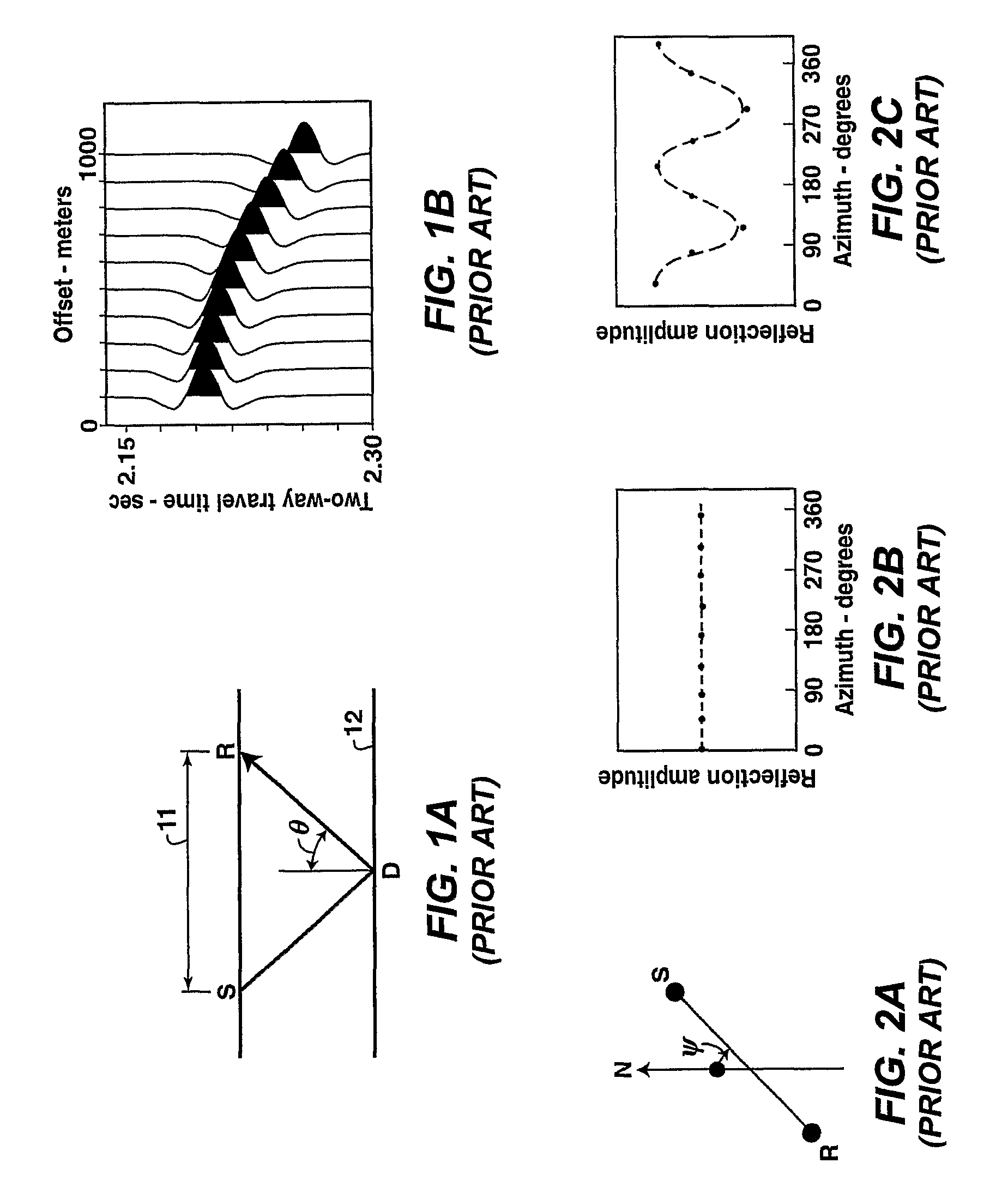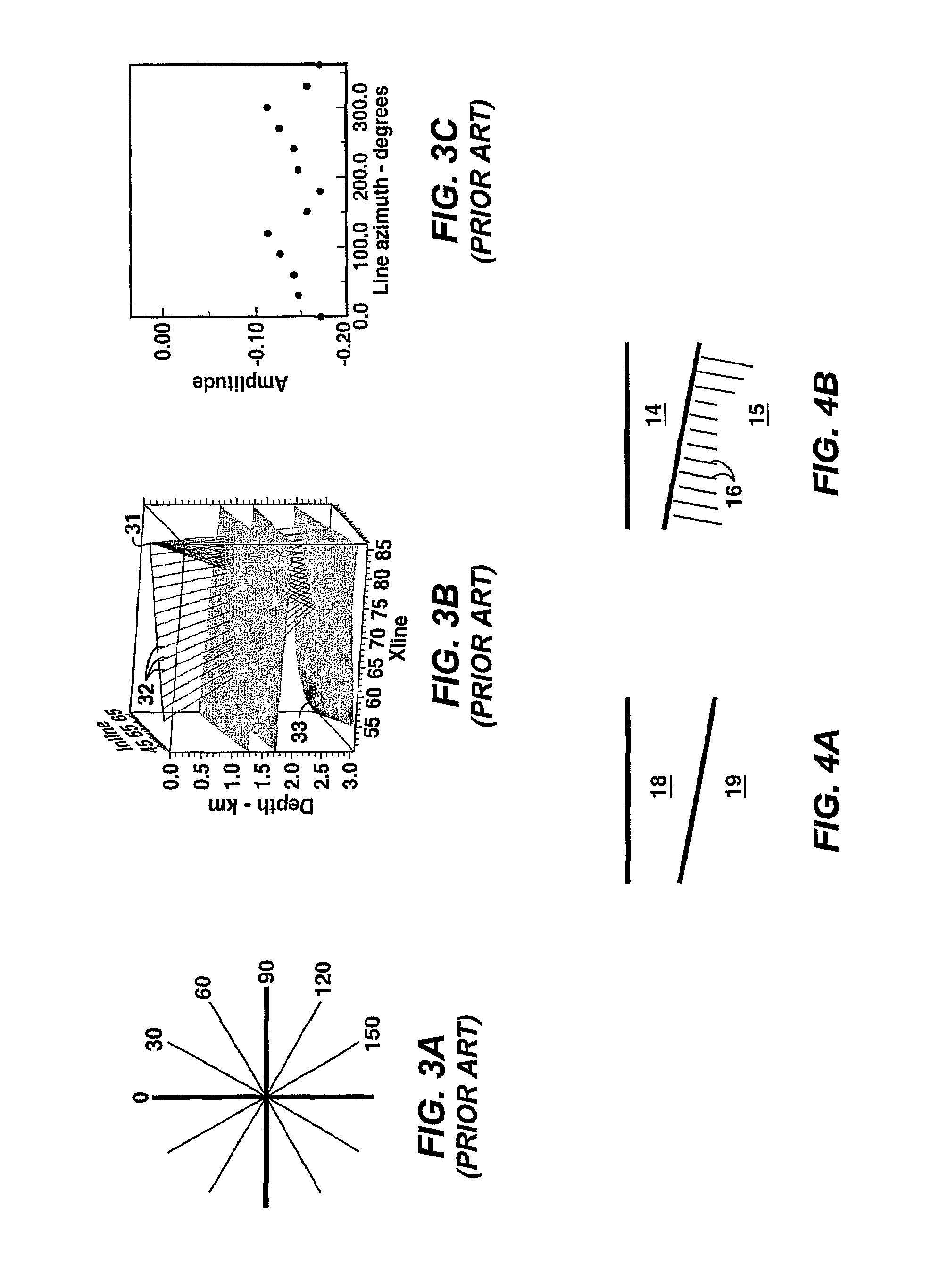Method for quantification and mitigation for dip-induced azimuthal AVO
a dip-induced azimuthal and quantification technology, applied in the field of geophysical prospecting, can solve the problems of data not yet being corrected, state-of-the-art processing, and inability to properly restore the amplitude of dipping reflectors,
- Summary
- Abstract
- Description
- Claims
- Application Information
AI Technical Summary
Benefits of technology
Problems solved by technology
Method used
Image
Examples
example
[0087]The Case 1 method was applied to a 3-D seismic dataset to demonstrate the simplicity and data-driven nature of the method. First, AzAVO inversion was applied to derive AzAVO attributes A, B, B′ and ψ0. The results for the first three attributes are displayed in FIGS. 11a-11c with in-line position plotted as the abscissa and two-way travel time as the ordinate. Attribute intensity is indicated by a gray scale shown in FIG. 11a, which displays the attribute A. Attributes B and B′ are displayed in FIGS. 11b and 11c, respectively. Attributes B and B′ were summed to derive the formation-intrinsic “slope” attribute B0, and the results are shown in FIG. 12. In this case, the dip angle of the formations is less than 5 degrees according to geological studies. (The dips of events may be directly observed from the attribute displays in each of these sections. The observed dip appears to be higher than 5 degrees. This is an illusion because the horizontal distance has been compressed alon...
PUM
 Login to View More
Login to View More Abstract
Description
Claims
Application Information
 Login to View More
Login to View More - R&D
- Intellectual Property
- Life Sciences
- Materials
- Tech Scout
- Unparalleled Data Quality
- Higher Quality Content
- 60% Fewer Hallucinations
Browse by: Latest US Patents, China's latest patents, Technical Efficacy Thesaurus, Application Domain, Technology Topic, Popular Technical Reports.
© 2025 PatSnap. All rights reserved.Legal|Privacy policy|Modern Slavery Act Transparency Statement|Sitemap|About US| Contact US: help@patsnap.com



